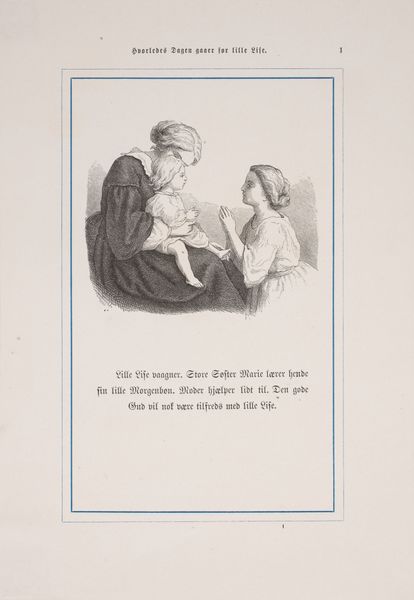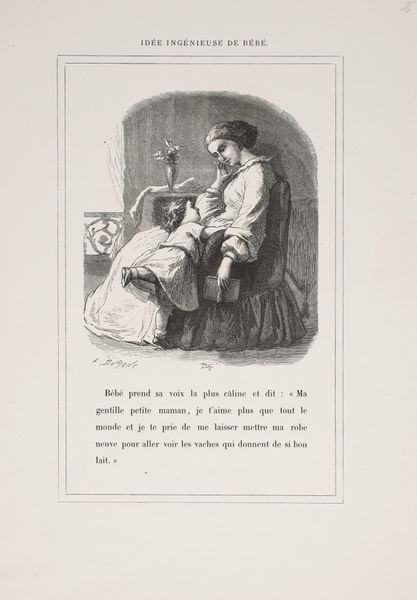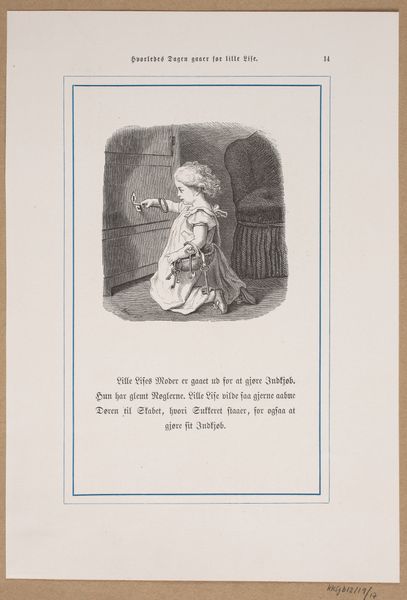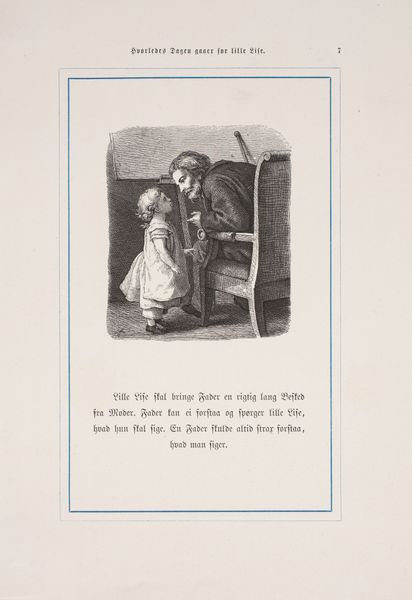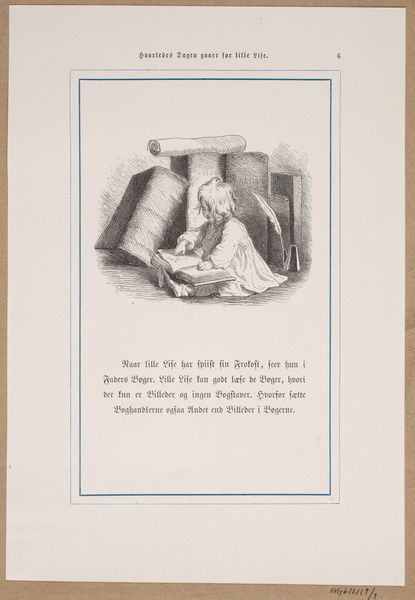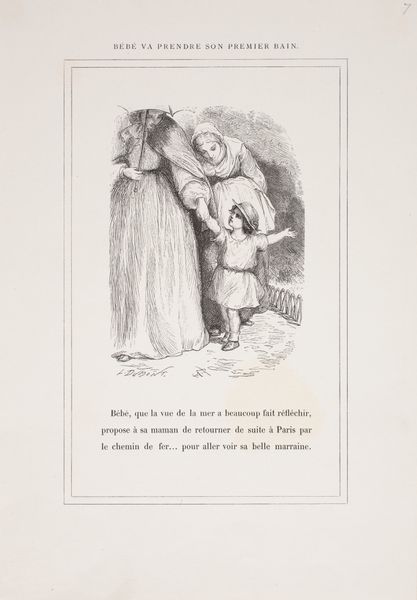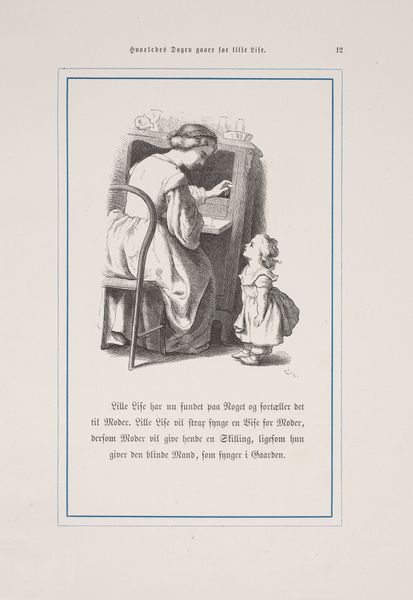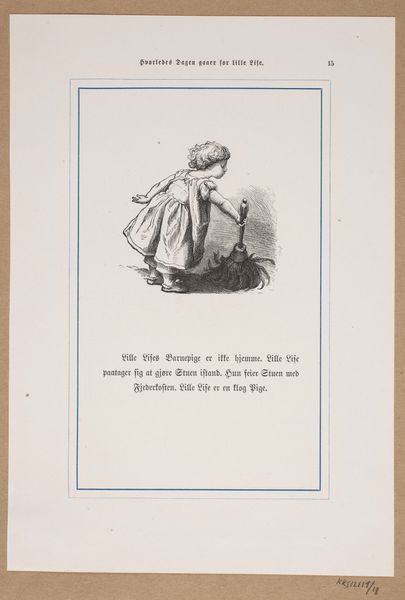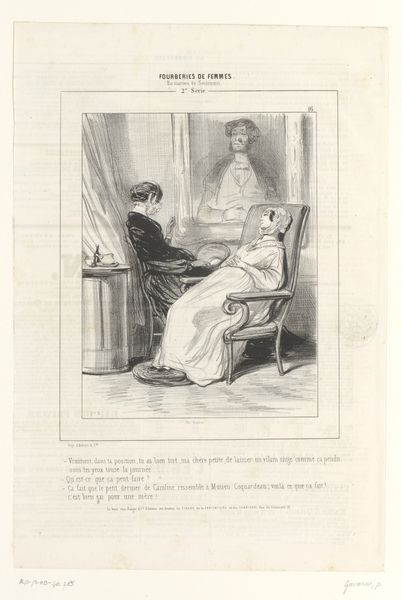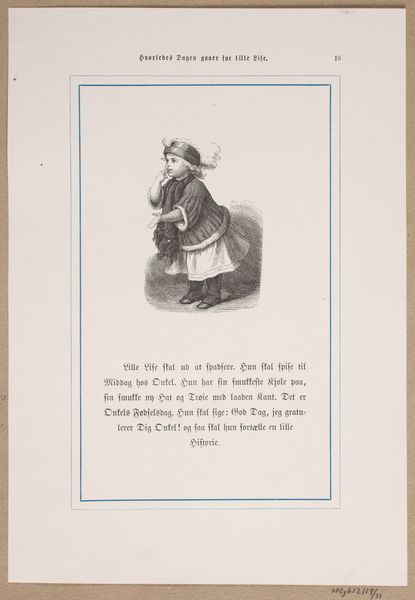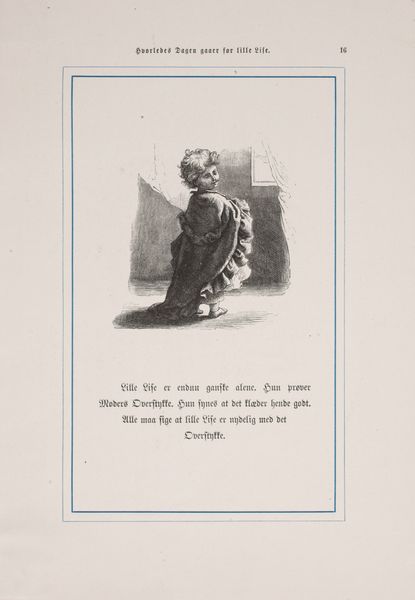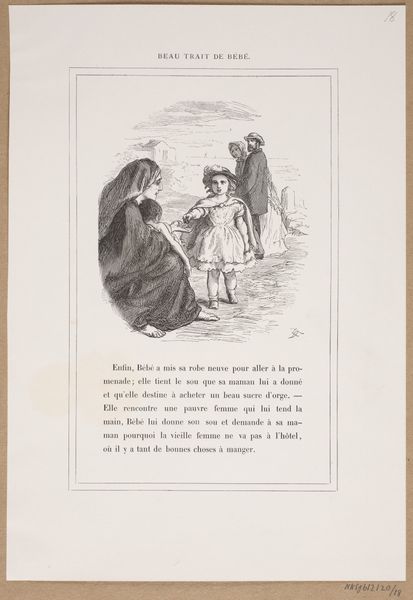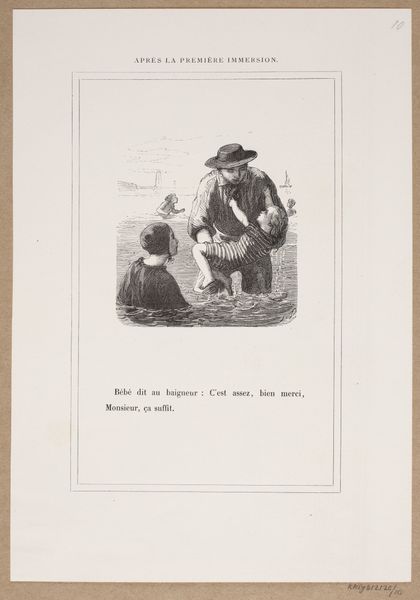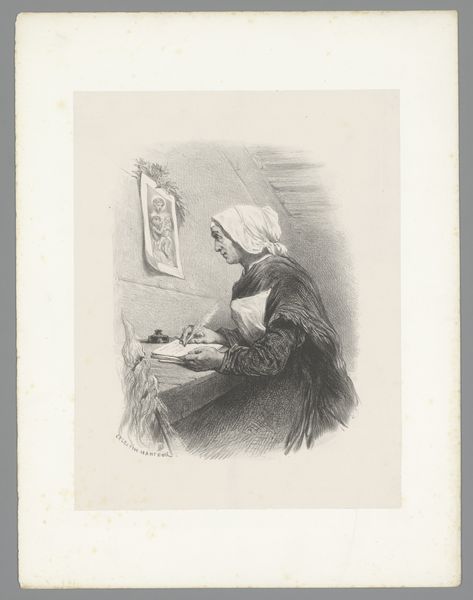
Illustration til "Hvorledes Dagen gaaer for Lille Lise" 1863
0:00
0:00
drawing, print, woodcut
#
drawing
# print
#
figuration
#
woodcut
#
genre-painting
Dimensions: 271 mm (height) x 187 mm (width) (bladmaal)
Curator: Here we have a delightful piece entitled "Illustration til 'Hvorledes Dagen gaaer for Lille Lise'" by Lorenz Frølich, dating from 1863. It’s a woodcut and drawing that presents a slice of 19th-century domestic life. Editor: My first impression is one of quiet intimacy. The delicate linework and monochromatic palette create a very calm and gentle mood. The scale feels quite modest, enhancing that sense of closeness. Curator: Absolutely. Genre paintings like this one were common at the time and intended to convey morals about raising a happy, self-sufficient child. The mother guides the child at the piano in a very structured arrangement. It emphasizes societal expectations that were a foundation of daily routines and learning at the time. Editor: The use of line is intriguing. Notice how Frølich varies the density of the lines to define the forms—creating light and shadow. The folds in the mother's dress and the child's dress create interesting textures and also create visual weight, grounding them firmly within this enclosed space. Curator: Consider how the piano, while a source of potential noise, is also presented as an ordered system – music equals civilization in many respects. In contrast, the child at the piano seems on the verge of creating an acceptable, practiced type of chaos. It’s symbolic of that time, revealing the tensions in how adults wish to nurture children versus allowing children room to explore and test the boundaries. Editor: I’m fascinated by the composition—how the artist uses a limited number of visual elements, and through slight variations in density and direction, they make each aspect compelling in its own way. Curator: Exactly. It is as much a visual representation of cultural ideas as it is a portrait of domesticity. Those lines evoke the prevailing views of mothers teaching their children a socially approved art that in return elevates them in social class. Editor: It’s certainly a piece that rewards careful looking. The interplay of shadow and light in that corner space alone gives insight into an atmosphere and the daily moments that create an environment. Curator: Yes, Frølich has managed to convey a complex interplay of human and societal ideas within this compact visual frame.
Comments
No comments
Be the first to comment and join the conversation on the ultimate creative platform.
